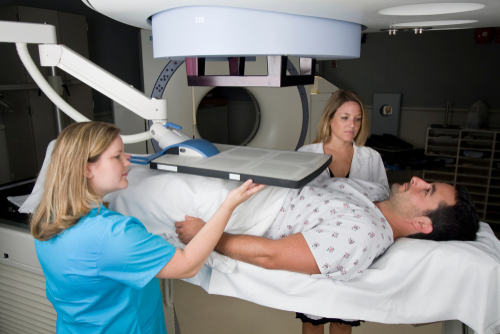Prostate cancer is one of the most common cancers among men worldwide, with significant impacts on health and well-being. Understanding the symptoms, diagnosis methods, and available treatment options is crucial for early detection and effective management of this disease. Through education, regular screenings, and timely intervention, individuals can improve their chances of successful outcomes and maintain optimal health in the face of prostate cancer risks.
Recognizing Symptoms
Prostate cancer can manifest with symptoms including frequent urination, difficulty urinating, blood in urine or semen, and pelvic discomfort. However, in its early stages, prostate cancer may be asymptomatic, underscoring the significance of routine screenings for individuals at risk. Proactive screening measures, such as prostate-specific antigen (PSA) tests and digital rectal exams (DREs), enable early detection and intervention, improving treatment outcomes and prognosis for affected individuals.

Screening and Diagnosis
Screening for prostate cancer commonly entails a prostate-specific antigen (PSA) blood test and a digital rectal examination (DRE). Anomalies in these tests may necessitate additional diagnostic procedures, like a biopsy, to validate cancer presence. Regular screenings are vital for early detection, enabling timely intervention and improving treatment efficacy, thereby enhancing the prognosis and quality of life for individuals diagnosed with prostate cancer.
Risk Factors
Age, family history, ethnicity, and lifestyle habits can all impact the risk of developing prostate cancer. Men over 50, those with a family history of the disease, and individuals of African descent are at higher risk and may benefit from earlier or more frequent screenings. Understanding these risk factors can guide healthcare decisions and promote proactive management strategies for individuals at increased risk of prostate cancer.
Treatment Options
Treatment for prostate cancer is multifaceted and tailored to individual factors such as cancer stage, grade, and overall health. Options include active surveillance, surgery, radiation therapy, hormone therapy, chemotherapy, or a combination of these approaches. Consulting with a multidisciplinary team of healthcare providers can help determine the most appropriate treatment plan based on each patient’s unique circumstances and preferences.

Active Surveillance
Active surveillance is a conservative approach to managing low-risk prostate cancer, involving close monitoring through regular PSA tests, digital rectal exams (DREs), and periodic biopsies to track disease progression. By avoiding immediate treatment, active surveillance aims to minimize the risk of overtreatment and associated side effects, while still providing the option for intervention if cancer shows signs of progression. It offers a balance between active intervention and watchful waiting, allowing patients to make informed decisions about their care.
Surgery
Surgical options for prostate cancer include radical prostatectomy, which involves removing the entire prostate gland, and minimally invasive procedures like robotic-assisted laparoscopic surgery. Surgery is often recommended for localized or aggressive cancers to remove the tumor and potentially cure the disease. Patients should discuss the benefits and risks of each surgical approach with their healthcare team to make an informed decision.
Radiation Therapy
Radiation therapy is a common treatment modality for prostate cancer, utilizing high-energy rays to target and destroy cancer cells or shrink tumors. External beam radiation therapy and brachytherapy (internal radiation) are two primary approaches used in prostate cancer treatment. Radiation therapy may be employed as a standalone treatment or in combination with other modalities such as surgery or hormone therapy, depending on the stage and characteristics of the cancer.

Hormone Therapy
Hormone therapy, also referred to as androgen deprivation therapy (ADT), is a cornerstone of prostate cancer treatment. By lowering testosterone levels, which can stimulate prostate cancer growth, hormone therapy aims to slow or halt tumor progression. It can be used in conjunction with other treatments, such as radiation therapy or chemotherapy, or as a standalone therapy for advanced or metastatic prostate cancer.
Chemotherapy
Chemotherapy remains a valuable tool in the arsenal against prostate cancer, particularly for cases that have progressed to an advanced stage or have become resistant to other treatments. By targeting rapidly dividing cancer cells, chemotherapy drugs aim to slow tumor growth and improve symptoms. While not always the initial treatment choice, chemotherapy may offer benefits for certain individuals with prostate cancer.
Immunotherapy
Immunotherapy drugs stimulate the body’s immune system to target and destroy cancer cells, offering new hope for prostate cancer treatment. While ongoing research continues to explore its efficacy and safety, immunotherapy holds promise, especially for advanced or metastatic prostate cancer cases where traditional treatments may be less effective.

Supportive Care
Managing prostate cancer involves not only treating the disease but also addressing its physical, emotional, and practical impacts on patients and their families. Supportive care services, including counseling, pain management, and palliative care, aim to enhance quality of life throughout the cancer journey. By providing comprehensive support, healthcare teams can help patients navigate the challenges of prostate cancer with dignity and comfort.
Conclusion
Prostate cancer is a complex disease that requires comprehensive care and management. By understanding the symptoms, risk factors, and treatment options, individuals can make informed decisions about their health and well-being, improving outcomes and overall quality of life. Regular screenings, open communication with healthcare providers, and access to supportive services are essential elements of prostate cancer care, empowering patients to navigate their cancer journey with confidence and resilience.

